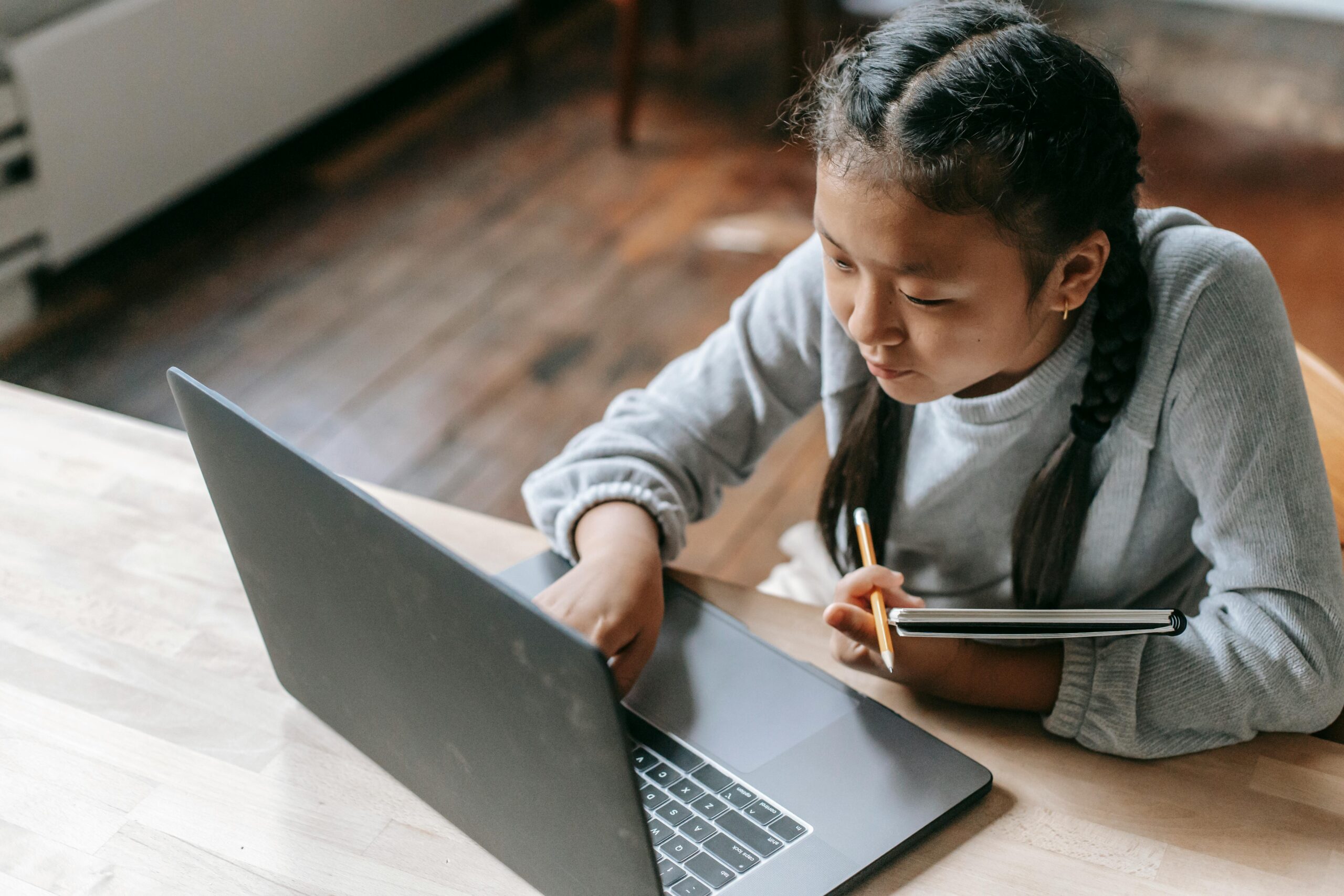The Power of Connection: Building Bonds with Your ADHD Child

Parenting a child with ADHD can feel like a whirlwind—moments of laughter and love mixed with challenging meltdowns and endless tasks. But amidst the chaos, one thing has made all the difference: connection. One of the most valuable lessons I’ve learned as a parent of a child with ADHD is the importance of connection. As a special education teacher, I understood how essential it was to connect with my students to create a positive learning environment. But as a parent, especially of a neurodiverse child, I’ve realized that connection isn’t just important—it’s everything. There are days when the challenges seem endless—maybe they’ve had an hour-long meltdown over something small or you’ve spent twenty minutes trying to get through a single page of homework. In these moments, pausing to reconnect can make all the difference for both of you.
But I’m with my Child All the Time, isn’t that Connection?
You might think, I’m with my child all the time; I don’t need to worry about connection. As the primary caregiver, you likely spend hours each day with your child, but often that time is filled with tasks like preparing meals, helping with homework, paying bills, and managing the countless other things parents handle.
Are you truly spending quality, one-on-one time with your child each day? Are you putting away your phone, letting your child take the lead, and engaging in what they want to do? Are you fully listening to what they want to talk about?
Being there for your child and actively connecting with them are two different things. Think about the last time you set aside your tasks to join your child in their world. Did you put the dishes aside to play with dolls or pause the paperwork to help build a fort?
With so many responsibilities, we often feel pressured to maintain a picture-perfect home. Yes, cleaning the kitchen is important—but maybe the dishes can wait a little while. What’s more important: a spotless kitchen or a strong, connected relationship with your child? Consider embracing ‘good enough’ to lighten your expectations and free up some time, click HERE for more about ‘good enough’ parenting.
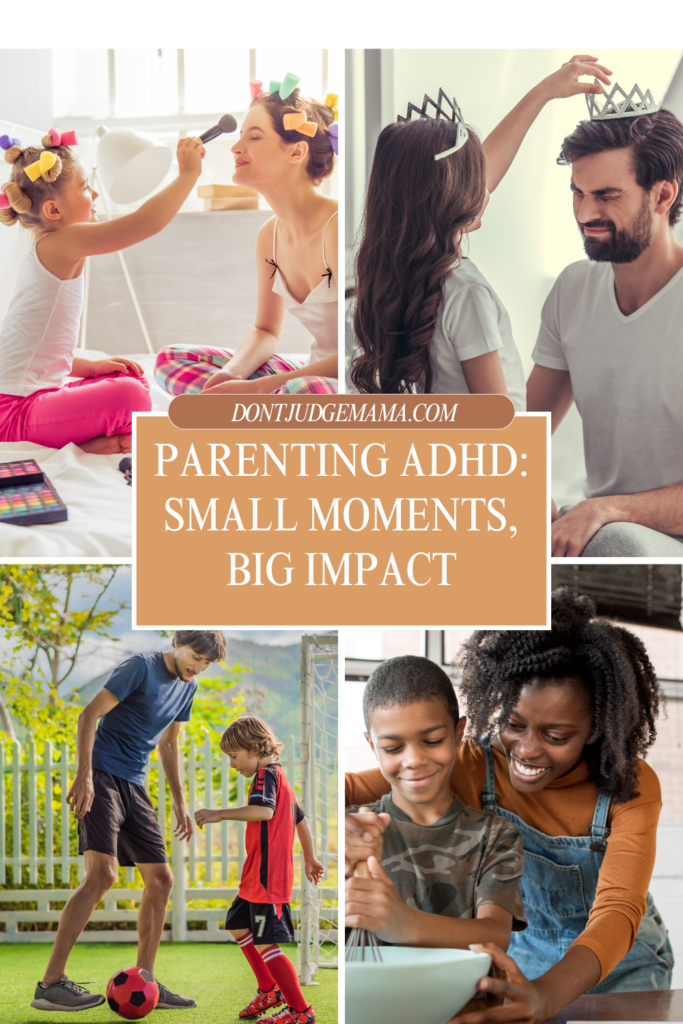
Making Connection a Daily Ritual
Creating intentional moments of “special time” with your child every day is a powerful way to strengthen your bond. This doesn’t have to be elaborate. Just 5-10 minutes, one-on-one, doing something they love, can mean the world to them. And if you have more than one child, aim for this individual time with each of them. Turn off distractions like phones, put aside chores, and really focus on them. This uninterrupted attention can be a true anchor for your relationship.
Each morning, I make it a priority to walk my daughter to school. She loves parking and then walking the rest of the way—it’s something that’s really important to her. So, I’ve adjusted my routine, waking up a bit earlier to make this time possible. Would I prefer ten more minutes of sleep? Absolutely. Would I rather drop her off from the warmth of the car? Without a doubt. But this time is special to her, and it’s become a treasured part of my day, too. During our ten-minute walk, we hold hands, talk, and share small moments. She loves it, and, honestly, it’s one of my favorite parts of the day (even if I’m a little cold!).
Maybe a morning walk isn’t feasible for your schedule, there are other ways to work in special time. Does your child like to play games? Maybe they want to show you something cool they’ve learned in a video game, or you could toss a ball around in the backyard. Let them choose the activity, and try to be fully present with them. It’s not about asking twenty questions or digging into their day—it’s just about being there, letting them lead, and enjoying that connection.
Suggestions for Connecting with Your Child with ADHD
- For younger kids:
- Dance – put on some music and dance around the living room!
- Art – if your child likes art, sit down and paint together.
- Build a fort – kids love this!
- Play with the ball – your sporty kids may want to kick or throw the ball with you.
- Board games and puzzles can be a fun special time activity.
- Take a walk, it doesn’t have to be long, just a quick walk around the block and do wonders for connection.
- For teens:
- Emphasize shared interests; sports, music, fashion, whatever their interests are.
- Activities that give them autonomy, like cooking or baking together.
- Walk the dog together!
- Even playing that video game with them, can be bonding. Although screen free connection is preferred, if gaming is really what they want to do, then go with it.
These are just a few examples to get you started. (Click HERE for more family bonding ideas.) Take a moment and think about what activities light up your child’s face, these are the perfect special time activities to focus on.
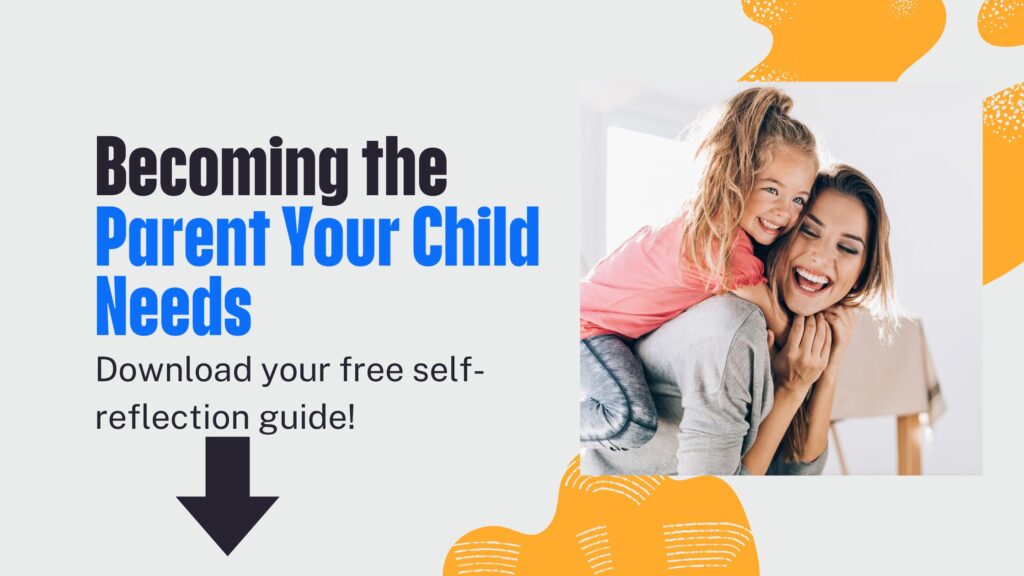
Take the first step toward becoming the parent your child truly needs with this free self-reflection guide! Click HERE to get the free guide.
What if my child doesn’t want special time?
Experts suggest naming special time with your child and letting them know it’s dedicated just for them. When I tried this with my daughter, though, she wasn’t interested. I offered a few ideas for activities we could do together, but she responded with a “maybe later” that never turned into a yes. I didn’t want to force special time, but I knew how much I wanted to create these moments with her, so I decided to be flexible and shift my approach.
Rather than setting aside a specific time, I began looking for natural opportunities to connect. When I see her playing with her toys, I might sit down and join her for 5–10 minutes. If she wants to build a fort, instead of sighing about the mess, I’ll say, “Great, let’s get started!” One day, on our way home, she spotted a pumpkin patch with a bounce house she wanted to visit, so we went—and I even joined her in the bounce house for a few minutes.
All these moments are child-led activities that I turn into “special time” by being intentional, engaged, and fully present with her. I try to end our special time together with a sentence like “I love our special adventures together.” Or “That was so much fun making a fort, I love spending special time with you.” I do this with the intention of helping her make the connection, that I’ve dedicated this time to be with her because she is special to me, loved and I value her interests.
Finding Creative Moments to Connect with All Your Children
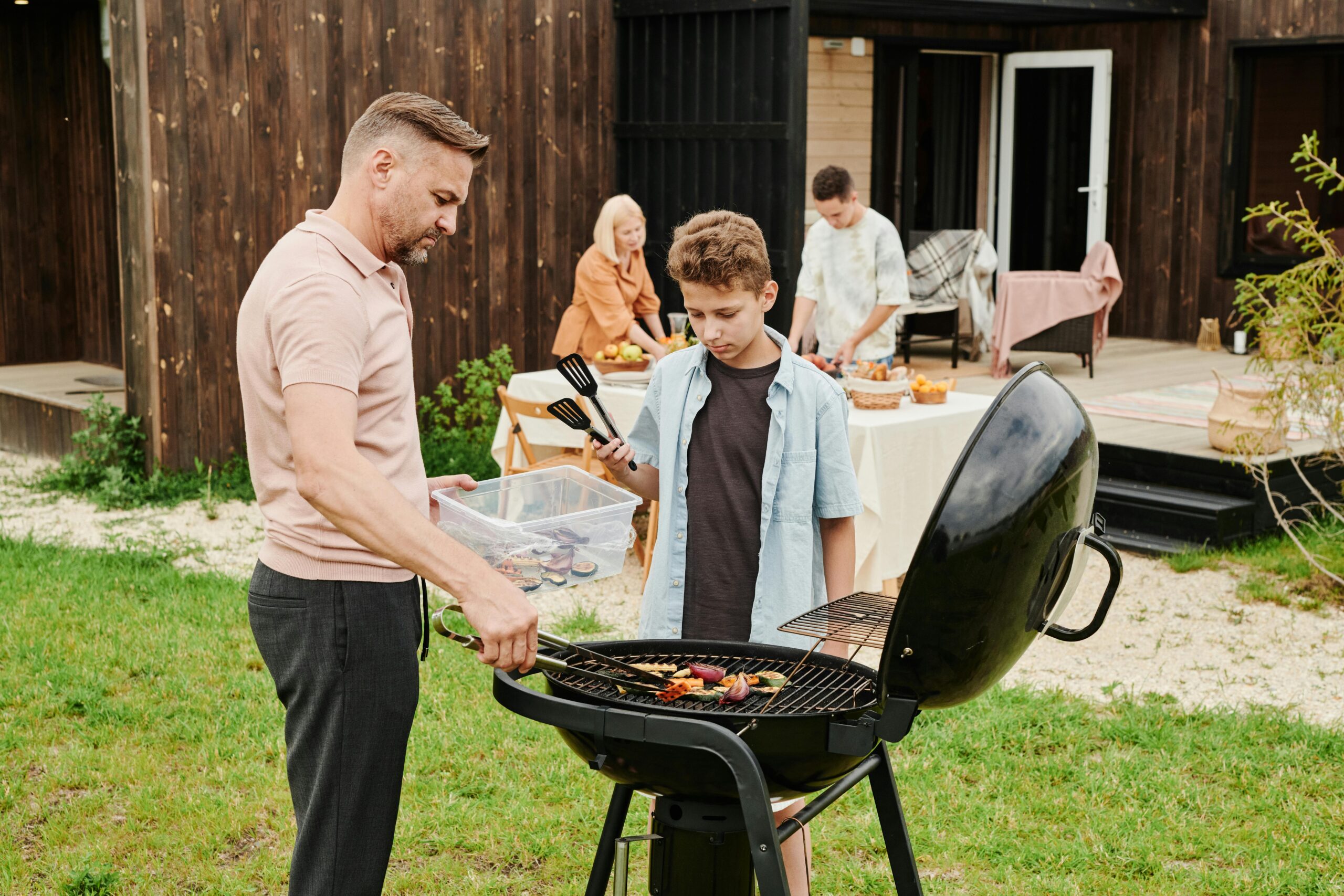
If daily one-on-one time with each child isn’t realistic, think about other ways to build connection throughout the week. Try rotating through each child if you have a few, or team up with your partner to make sure everyone gets a little special attention.
For instance, my husband’s work schedule keeps him busy, and he often doesn’t get home until later in the evening. Even so, he makes an effort to find small ways to connect with our daughter. One of their favorite routines is spending a few minutes together at bedtime—they lay down, talk, and laugh. He also loves taking her for short drives in his convertible when the weather is nice. These moments might seem simple, but they help build a lasting bond between them.
Car rides have also become one of our favorite ways to connect. Between school, activities, and errands, we’re in the car a lot, and sometimes, I’ll turn off the radio so we can just talk. She loves asking questions, and we’ve had some amazing conversations on these drives. Other times, we’ll turn up a song we both love and sing along like we’re pop stars—it’s something that always brings a smile to both of our faces.
Creating Special Memories: The Magic of a “Special Day”
Along with daily moments of connection, I’ve found that planning a “special day” now and then can be incredibly meaningful. Once a year, I like to surprise my daughter with a day that’s just for us. Recently, we spent the day at a water park together—riding slides, floating down the lazy river, and enjoying yummy snacks. It was a wonderful day filled with laughter, and it’s something we’ll both remember.
My husband did the same with her at Six Flags, spending the day going on roller coasters and sharing that special excitement. These “big” days don’t need to be fancy or expensive. Think of activities your child enjoys, whether it’s a trip to the zoo, a beach day, or even a backyard picnic. The key is to create a lasting memory together, one that’s all about the two of you.
Why Connection Matters (Even on the Hard Days)
“Special time increases opportunities for closeness between a parent and child. As that attachment is building, it increases the likelihood that a child is going to listen or value what a parent has to say,” says Roger Harrison, a pediatric psychologist with Nemours Children’s Health in Wilmington, Del. See more in this NPR article.
These little moments of connection can have a big impact on your relationship with your child, especially when they’re feeling overwhelmed or struggling. Taking a few minutes each day to reconnect helps build a sense of safety, trust, and understanding between you. When problems arise, like that mega meltdown, having a strong connection will help you both weather the storm. It’s a chance to show them they are valued and loved, even on the most challenging days. And these connections aren’t just about making them feel secure—they’re also incredibly grounding for us as parents. They remind us of the joy, resilience, and humor our children bring, even when things get tough.
Building connection doesn’t need to be time-consuming or perfect. It’s the daily intention that matters. Those five or ten minutes a day can lay the foundation for a bond that helps you both through whatever storms may come. So, if you’re feeling overwhelmed, remember that it’s these small, intentional moments that can make all the difference.
What’s one small way you can connect with your child today?
I’d love to hear from you, what activities do you do with your child to connect? Remember, don’t judge mama! Please keep the comments positive and helpful.
If you like this post, please share, let’s spread the love and connection!
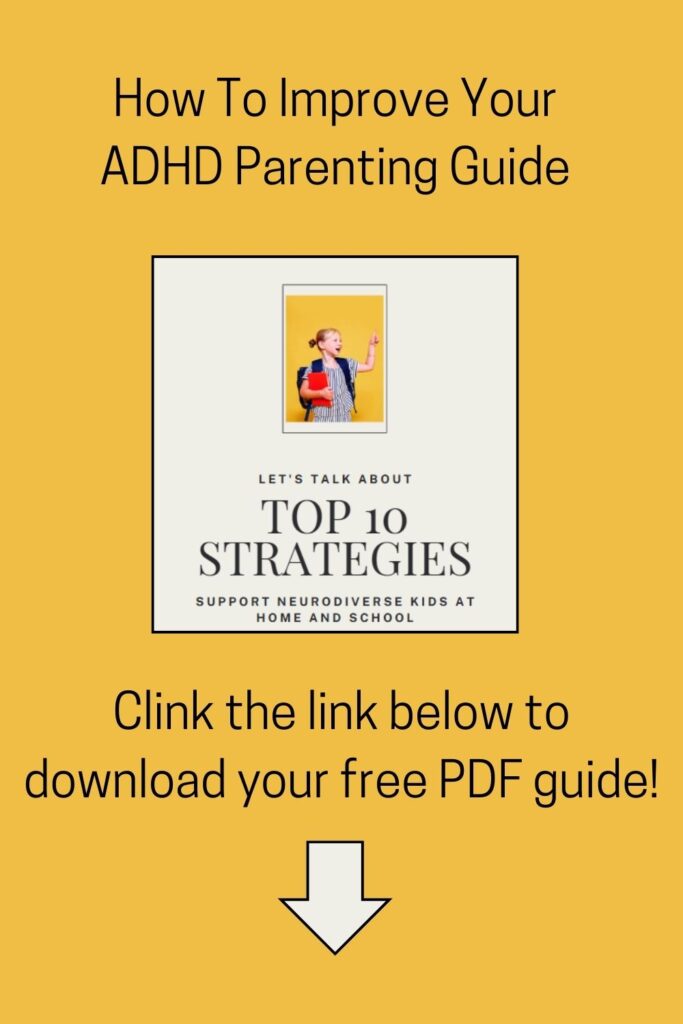
Check out this FREE resource: Top 10 Strategies to Support Neurodiverse Kids at Home and School! Click HERE to get the resource.



